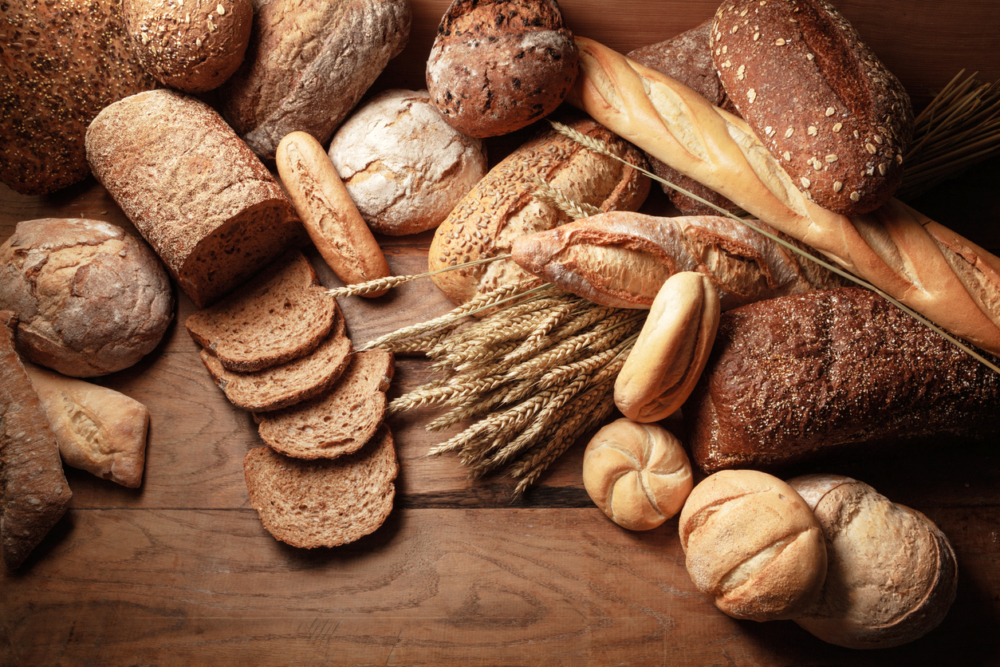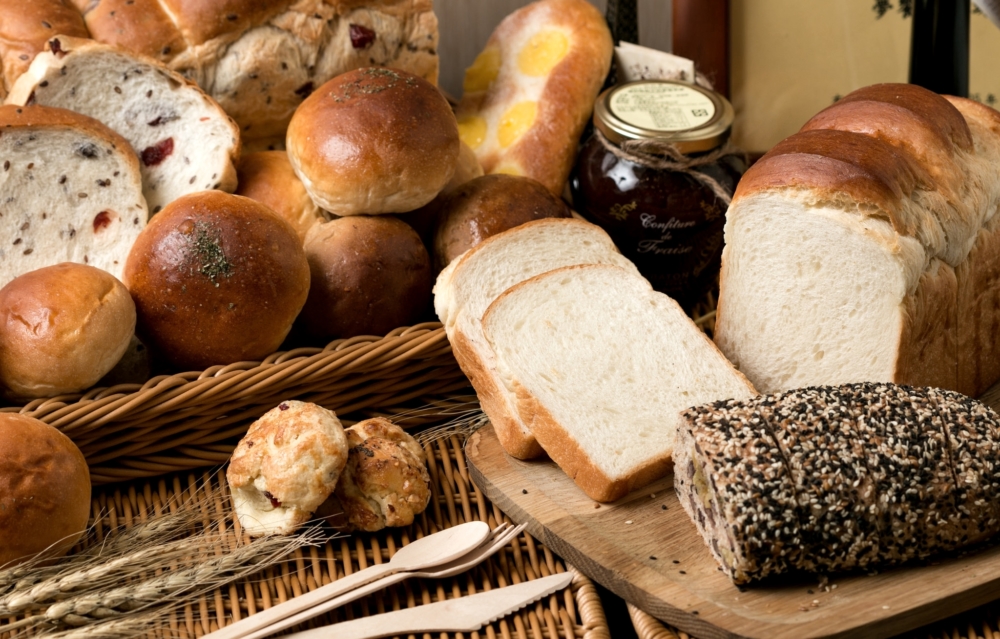Bakery products are usually not classified as low-calorie foods, they are considered enemies of a slim figure. But this does not mean that such products have no place in the diet of losing weight. You need to remember how many calories in bread of different varieties, choose the least high-calorie and healthy.
Material Content:
Chemical composition and nutritional value
A variety of bakery products is achieved thanks to a large selection of flour. Other ingredients: water, salt and baking powder. When baking, starch, soy flour, malt products, emulsifiers, preservatives are added. Used flour from one or different types of grains. The main varieties can be combined into 4 groups: wheat, rye, mixed wheat and mixed rye.
Wheat bread contains a large amount of carbohydrates; it is better absorbed by the body than other types. Proteins in 100 grams of the product - 8.2 g, fat - from 1.2 to 2.1 g, carbohydrates - from 48 to 50.2 g.
Mixed wheat bread in everyday life is also called gray. The ratio of wheat and rye flour for each manufacturer has differences. The average nutrient content per 100 g: protein - 9.4 g, fat - 2.8 g, carbohydrates - 49.3 g.
Rye bread contains a rich set of amino acids. The amount of protein in 100 g of this product is 6.9 g, fat - from 1.1 to 1.3 g, carbohydrates - from 41 to 43.7 g.
Bread is low-fat food. The composition contains mono - and polyunsaturated fatty acids. The content of harmful saturated fatty acids is higher in those varieties of bakery products in the production of which margarine is used.
A useful component of bread is dietary fiber. The content in different grades is different. You can focus on the indicator of 2.6 g / 100 g.The same mass of bread includes 37.8 g of water, 1.7 g of ash.
Losing weight is recommended to consume more whole grain fiber-rich bread. There are other special types for diet: multi-grain, oat, protein.
Whole grain bread is baked from wholemeal flour. All parts of the wheat grain are preserved, including the shell. Protein bread got its name due to its high protein content - 14.4 g / 100 g. In the same amount of fat product - 11.2 g, carbohydrates - 5.8 g.
How many calories in bread of different varieties
Calorie content depends on the content of all food components. The largest contribution to the energy value of bread is made by carbohydrates, since their content is quite high. The calorie content of white bread is 236 kcal, the loaf is 260 kcal per 100 g. The more wheat flour is in a bakery product, the higher the energy value.
The calorie content of gray bread is less, is 198–240 kcal / 100g. How many calories are in brown bread depends on the flour and other ingredients used. The average calorie content of rye bread is from 199 to 212 kcal (per 100 g), the Borodinsky variety is 202 kcal / 100 g.
Those who count calories should pay attention to the weight of each grade slice: gray bread - 50 g, toast - 20 g, cracker - 10 g.
Bran used to be considered waste of flour milling. Then the attitude towards them changed. Nutritionists and doctors have found that the husk of grains is most rich in bioactive substances. Bread with bran is not to everyone's taste, but it is much more useful than white. Calorie content is 227 kcal per 100 g of product.
Special types of bread: protein, barley, low cholesterol, diet low in gluten or sodium. Calorie content of protein bread - 184, 2 kcal / 100g. The product has become very popular in European countries, where it has already appeared in abundance on store shelves.
However, nutritionists are sounding the alarm. Protein bread contains more fat compared to other varieties. Another disadvantage for consumers is the high price. Protein bread can be prepared at home using cottage cheese, eggs, oat and wheat bran, and baking powder.
The content of vitamins, trace elements
Different types of bread are supplied to the body by vitamins A, E, group B. The content of tocopherol (E) is 1.1 mg. The same amount of vitamin B1 is present in the composition. Weight of other vitamins and vitamin-like compounds: 0.03 mg B2; 37.8 mg B4; 0.19 mg B5; 0.1 mg B6; 22.5 μg B9; 1.24 μg N; 2.2 mg PP. All indicators correspond to 100 g of the product.
The macronutrient composition of bread is striking in variety. Present are 824 mg of chlorine, 499 mg of sodium, 93 mg of potassium, 65 mg of phosphorus, 54 mg of sulfur, 20 mg of calcium, 14 mg of silicon. Trace elements are mainly represented by iron, zinc, copper, manganese.
Benefits for the body
Comparison of the composition of whole grain and white bread proves the advantages of the first. Higher content of vitamins, dietary fiber, minerals. Many of the components that benefit the body are located in the outer parts of the grain; when it is cleaned and the flour is lost.
Note! The magnesium content in 100 g of wheat grains is ten times higher than in flour.
In terms of nutrition, all sorts of bread are healthy. They are affordable sources of energy. Carbohydrates quickly enter the bloodstream and are consumed by the body. Supporters of a low-carb diet do not consider bread useful, refuse to eat it.
A study in one of the Scandinavian countries proved that an increase in protein in the diet and a decrease in carbohydrates increase the risk of heart attack, stroke. Carbohydrates from whole grain flour are “slow”, they are longer digested, glucose gradually enters the blood.
Possible harm from use
When buying bakery products, it should be borne in mind that white is a sign of refined (refined) flour and the addition of bleaching chemicals. Shells, the germ are removed, only starch, protein and fats remain.
As scientists have found, the consumption of refined foods is the path to obesity, food addiction and disease.
Gluten in the composition of flour is a reason to worry for those who are intolerant to this substance. A gluten-free diet can be beneficial to a healthy person.
The minus of the finished bakery products from the store is various antioxidants, preservatives and other food additives. The exact amount and percentage of the consumers is unknown, it remains only to rely on the conscience of the producers.















